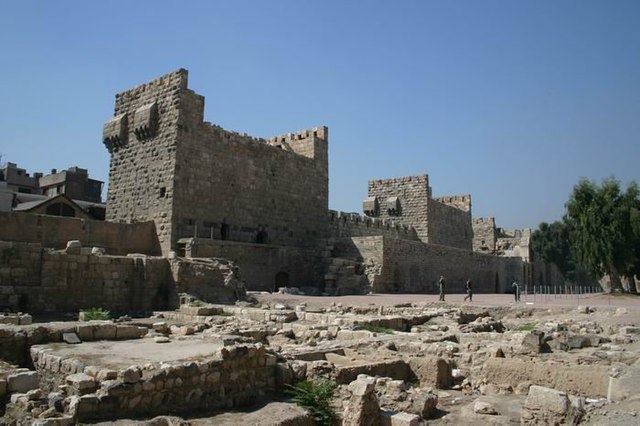Ibn Taymiyya was a Sunni Muslim scholar, jurist, traditionist, ascetic, and proto-Salafi and iconoclastic theologian. He is known for his diplomatic involvement with the Ilkhanid ruler Ghazan Khan at the Battle of Marj al-Saffar, which ended the Mongol invasions of the Levant. A legal jurist of the Hanbali school, Ibn Taymiyya's condemnation of numerous folk practices associated with saint veneration and visitation of tombs made him a contentious figure with many rulers and scholars of the time, which caused him to be imprisoned several times as a result.
The Umayyad Mosque pictured in 1895, where Ibn Taymiyya used to give lessons.
An artist illustrated of Ghazan Khan, a historical figure harshly rebuked by Ibn Taymiyya, mainly due to his constant state of hostility towards the Mamluks of Egypt.
Citadel of Cairo, the place where Ibn Taymiyya was imprisoned for 18 months
The Citadel of Damascus, the prison which Ibn Taymiyya died in
Sunni Islam is the largest branch of Islam, followed by 85–90% of the world's Muslims, and simultaneously the largest religious denomination in the world. Its name comes from the word Sunnah, referring to the tradition of Muhammad. The differences between Sunni and Shia Muslims arose from a disagreement over the succession to Muhammad and subsequently acquired broader political significance, as well as theological and juridical dimensions. According to Sunni traditions, Muhammad left no successor and the participants of the Saqifah event appointed Abu Bakr as the next-in-line. This contrasts with the Shia view, which holds that Muhammad appointed his son-in-law and cousin Ali ibn Abi Talib as his successor.
Istiqlal Mosque in Jakarta, Indonesia.
The Great Mosque of Kairouan (also known as the Mosque of Uqba) in the city of Kairouan, Tunisia, was, particularly from the 9th to 11th century, an important center of Islamic learning with an emphasis on the Maliki Madh'hab.
Muhammed accompanied by the archangels Gabriel, Michael, Israfil und Azrael. Turkish Siyer-i-Nebi-work, 1595
Historic Quran of Old Dhaka, Bangladesh








